One piece of bad news: while resistance has been successfully curbed in Switzerland, it continues to increase worldwide, according to the report.
Source: LID
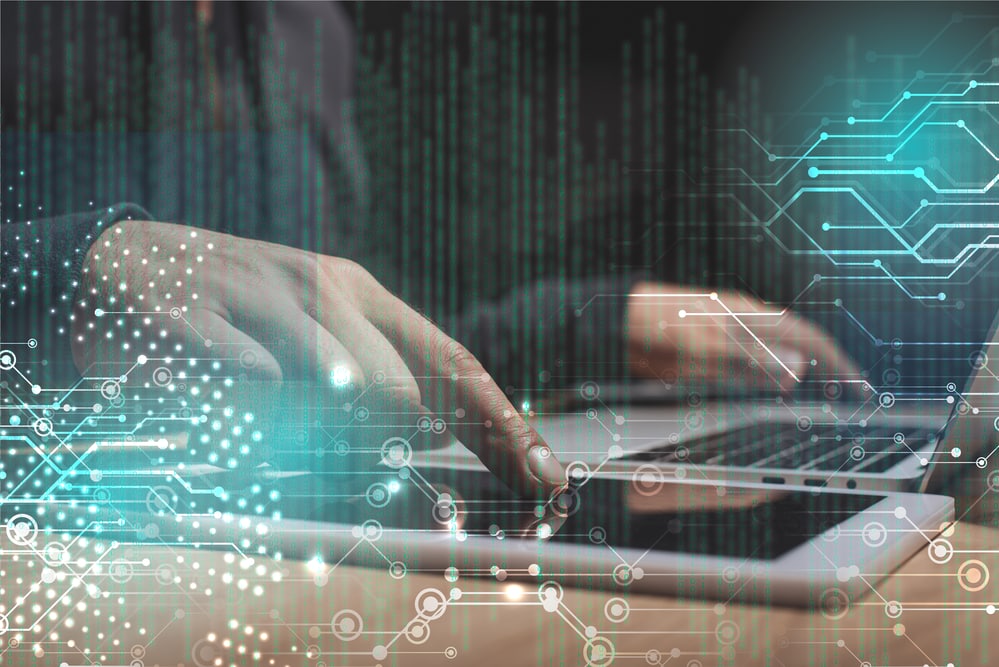
In terms of global cyberattacks, Check Point's cyber forensics experts recorded a 28 percent increase compared to the same quarter last year - and a five percent increase in the healthcare sector, by the way. In Germany, there was an increase of 27 percent, in Austria of 15 percent. Switzerland suffered the greatest increase in attacks, with a rise of 76 percent.
Check Point points out some general tips on this:
Source: Check Point Software

Researchers of the University of Southern California have discovered significant changes in the perivascular spaces of a brain region called the "centrum semiovale" on MRI images. Perivascular spaces are fluid-filled bubbles surrounding blood vessels in the brain. They are most commonly found in the basal ganglia deep in the cerebral hemisphere and the center of the cerebrum, and along the visual tract. Perivascular spaces can cause blood-brain barrier abnormalities and inflammation.
Migraine is a condition with severe headaches. It can also cause nausea, weakness and sensitivity to light. According to the American Migraine Foundation migraine affects more than 37 million people in the U.S. alone, and up to 148 million people worldwide suffer from chronic migraine. Wilson Xu and his colleagues detected the enlarged perivascular spaces with a seven-tesla MRI - common clinical devices come up with a magnetic field just half as strong.
To identify correlations, the researchers compared structural microvascular changes in different types of migraine. "Studying how fluid accumulation contributes to migraine could help us better understand the complexity of how migraine occurs," he said. Because the MRI we use is able to produce images of the brain with much higher resolution and better quality than with other types of MRI, we can detect much smaller changes that occur in brain tissue during migraine," Xu said.
The study participants included ten subjects each with chronic and episodic migraine and five healthy people. All were between 25 and 60 years old. The researchers suggest that significant differences in perivascular spaces in patients with migraine compared to healthy people indicate a glymphatic disorder in the brain.
The glymphatic system is responsible for eliminating soluble proteins and metabolites that are waste from the central nervous system. This could be a cause of migraine, however, much research needs to be done to understand all the connections. The results will be presented at the annual meeting of the Radiological Society of North America presented in Chicago from November 27 to December 1.
Source: Press text
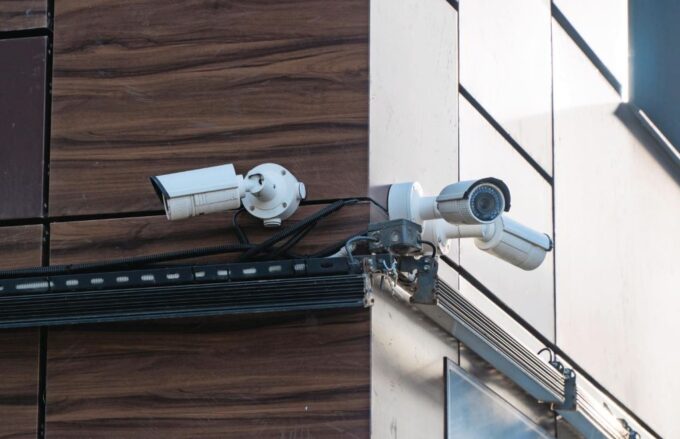
Video cameras today are de facto computers with a lens. However, the use of video intelligence can become a major stress test for a company's management. For example, video surveillance not only prevents reliable protection of property, but when used properly, can also improve business processes such as regulatory compliance, positively impacting the bottom line.
In an analysis by the International Security Ligue on video security, some security executives believe that companies in general are underutilizing the systems and, as a result, valuable features are being wasted. This relates to features of integration, remote monitoring and analysis, among others. Another expert noted: Some companies would install network cameras only to be lulled into a sense of security that commissioning would make a difference. The need for professional maintenance and management of the systems, on the other hand, is usually neglected, he said.
Today's video security systems are improving rapidly, but advanced features are meaningless if there is a lack of resources or understanding among operations personnel, experts added.
However, lack of planning and security expertise can lead to expensive camera setups that would not meet expectations. Strong partnerships between all stakeholders, from security service providers to business unit managers, are important to increase the business value of security video applications, he said. Most importantly, he said, it has become increasingly important to establish clear goals and a well-defined strategy that should be incorporated into the design of the system.
The specialist group advises the following three steps, which companies should first go through as a checklist:
Source: International Security League Case Study: "See Benefits from Security Video More Clearly with Expertise, Communication" from 10.04.2022.

Basically, burns and scalds are caused by the action of heat on the skin. In order to understand why the treatment of such thermal skin injuries belongs very quickly in the hands of professionals, one must bear in mind how important our skin is and what tasks it fulfills.
The skin is the largest organ of the human body. In adults, it covers an area of around 1.7 square meters and weighs 10 to 14 kilograms. Depending on the region of the body, it is between 0.5 and 4 millimeters thick. The skin consists of three layers: epidermis, dermis and hypodermis, which in turn also consist of several layers.
The epidermis contains cells that ensure that the skin can constantly renew itself. The dermis forms the thick, elastic yet firm middle layer of the skin. The subcutis stores energy in its fat cells and insulates the body. The various skin layers fulfill many functions - but first and foremost, the skin protects us from harmful external influences as well as heat and fluid loss and is an important sensory organ.
The severity of a burn depends on the temperature, duration and area of heat exposure. Whereas in the case of minor damage only the upper layers of the skin are affected, in the case of severe burns or scalds the skin is damaged down to deeper layers. According to the affected skin layers, a classification is made into the severity grades 1 to 4.
In addition to depth, area is an important factor in assessing a burn. Wallace's "rule of nine" allows a quick estimate of the area affected in adults (different values apply to children: thus, burns to the head and neck correspond to nine percent, the arms to nine percent each, the front and back of the torso to nine percent each twice, the genitals to one percent, and the legs to nine percent each twice of the body surface.
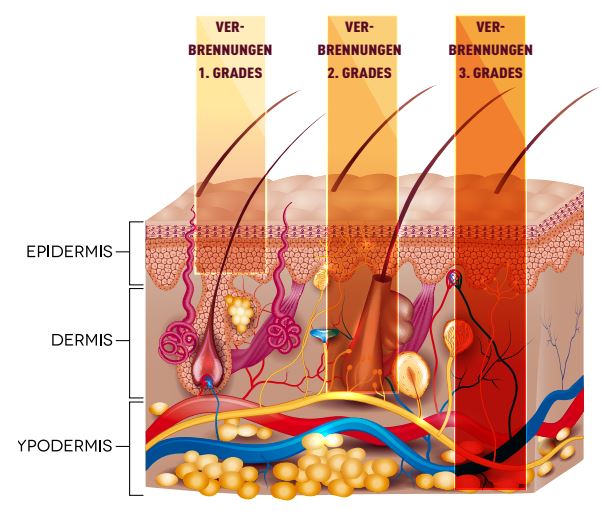
Decisive for the severity and thus the danger of a burn are the depth (degree) and extent of the affected skin area. This determines whether the tissue damage is local or can affect the entire organism and endanger life. If ten percent or more of the body surface is burned (in children from five percent), life-threatening complications can arise.
For second-degree burns that exceed the size of a postcard (two to three percent of the body surface), or if the face, genitals, or hands are affected, a physician should be consulted. If more than ten to fifteen percent of the body surface is second-degree burned, emergency medical services must be alerted.
Every third-degree burn and higher requires treatment in a hospital - and if it extends to more than ten percent of the body surface, even in one of the two special clinics for burn victims in Switzerland. Please note that in children, the elderly and weakened people, burns of five to ten percent of the body surface can already have life-threatening consequences.
1st degree symptoms:
First Aid:
Symptoms 2nd degree:
First aid
Alerting
For burns on the face or over joints and more than two to three percent affected area (postcard size): Consult a physician. If more than ten percent of the body surface is affected, alert the emergency medical center 144.
Symptoms 3rd degree
First aid
Alerting
Larger areas cannot heal themselves and require surgical treatment at a specialist burn clinic (in Zurich and Lausanne). Immediately alert Rega via the emergency number 1414 or the medical emergency center 144.
Symptoms 4th degree
First aid
Alerting
Self-healing is no longer possible; treatment at a specialist burn clinic (in Zurich or Lausanne) is urgently required. Immediately alert Rega via the emergency number 1414 or the medical emergency call center 144.
Source: Rega

According to the Federal Intelligence Service (FIS), the terrorist threat increased in Switzerland for several years. While the prosecution of terrorist threats lies with the federal government, the cantonal authorities are responsible for the operational management of a situation. In addition, there is also a need for coordinated political leadership and communication in the event of a terrorist threat.
To better coordinate supra-regional requirements, the Federal Council has created a new organization, the National Terrorism Advisory Committee (NATA). The primary task of the NATA is to coordinate political guidance and communication in terror situations.
In the event of a terrorist situation, the NATA is convened and chaired by the head of the FDJP. If Swiss interests abroad or consular protection tasks are affected, the head of the Federal Department of Foreign Affairs (FDFA) is also called in. The NATA can be supplemented by other government representatives from the Confederation, cantons or municipalities depending on the specific event.
The organization can be supported by a preliminary advisory body chaired by the director of the Federal Office of Police (fedpol). The committee is also made up of leaders from the federal and cantonal authorities. The new ordinance on the NATA comes into force as of January in force.
Source: Bund/Editorial

It happened one morning in October 2021 when mechanical parts fell out of the hands of an employee at Scintilla AG. A supervisor noticed this and informed the first aider Christian Juon. The latter acted correctly and recognized the symptoms of a stroke using the "BE FAST" method.
Only one of the six possible symptoms was conspicuous, namely the "A": The patient did not squeeze his hand. Christian Juon therefore immediately alerted the emergency call center 144 and informed the management of the company ambulance service, which was not on the premises on the day of the incident. The rescue service arrived and, after further tests, a rescue helicopter was called in. The patient was then flown directly to the hospital in Sion. It turned out that it was indeed a stroke. In the hospital he suffered another one. However, the patient could be discharged from the hospital after a few days and went to rehab.
This year's "SVBS Award" of the Swiss Association for Company Sanitation (SVBS) therefore went to the company paramedics of Scintilla AG from the Valais village of St. Niklaus.
It was only thanks to the exemplary intervention of Christian Juon that everything turned out all right. Stefan Kühnis, President of the Swiss Association of Industrial Paramedics (SVBS) agreed: "Without the rapid and correct first aid, this operation would hardly have turned out so well." He said it was quite central to recognize an emergency as such. The fact that he not only recognized the emergency, but also knew exactly what to do, had a lot to do with good organization and with education and training, Kühnis said. Therefore, the applause also went to the whole company.
For those who would like to inspire other first responders with their stories or projects, the application form for the next SVBS AWARD 2022 can be found at. www.svbs-asse.ch/anlaesse/svbs-award/.
Applications for an award must be sent in by April 1, 2023 at the latest. The award ceremony will take place during the "First Aider Symposium" at the KKL Luzern. The next edition is scheduled for November 4, 2023.
Source: SVBS/Editorial Office

In terms of global cyberattacks, Check Point's cyber forensics experts recorded a 28 percent increase compared to the same quarter last year - and a five percent increase in the healthcare sector, by the way. In Germany, there was an increase of 27 percent, in Austria of 15 percent. Switzerland suffered the greatest increase in attacks, with a rise of 76 percent.
Check Point points out some general tips on this:
Source: Check Point Software

Data centers require more and more electricity as a result of the immense increase in data. Against this background, the European Union has now a study to examine whether data centers could also be relocated into space in the future. Outside the earth's atmosphere, the climate on the earthly planet would no longer be endangered. The power supply could be provided by solar panels, while the data connection to Earth could be made via lasers.
Implementation is now being examined by the French Space company Thales. However, there is one hurdle: The data centers could not simply be built in space on a large scale. The feasibility study will now be used to evaluate how the hardware could be put into space, where it would be parked and how it could be maintained by robots.
Ultimately, however, safety issues also play a decisive role. It is true that data centers in space would be a long-term project for climate protection, since the environment would be cold anyway and thus require less electricity for cooling. However, what about, for example, commissioning or service procedures in the event of technical problems or orbital damage - or how would such data centers be protected against attacks?
The first step is to examine how many CO2 emissions are generated during the construction of the infrastructures and how these would compare with the construction of conventional data centers. After all, a lot of money has been invested in the feasibility study, so implementation should not be ruled out from the outset.
Source: deutschlandfunknova.de/editorial office
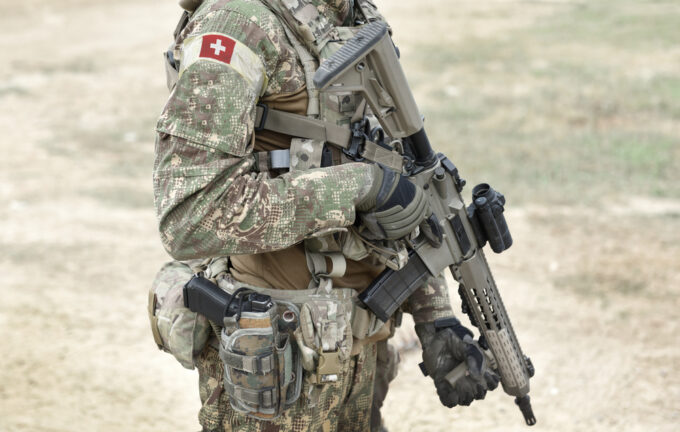
Starting Tuesday, one of the largest military maneuvers since 1989 will take place in Switzerland. During eight days, the interaction of ground forces will be tested. The exercise situation "PILUM 22" provides for practicing formations and standard procedures and training operations against armed groups. Around 5000 members of the armed forces are deployed in the cantons of Bern, Solothurn, Aargau, Lucerne and in Zurich.
According to the federal government, four mechanized battalions will be exercised, along with a logistics battalion and a brigade infantry company. Other units will also be involved. There is talk, for example, of a division specializing in electronic warfare and a detachment of the Special Forces Command.
Planning for the exercise took two years and was designed based on the "Future of Ground Forces" report, which the Federal Council approved in May 2019, he said. The entire exercise is intended to provide insights into where the ground forces stand today and how they will develop in the future.
The Armed Forces ask the population for their understanding for any additional noise and obstructions in road traffic. A hotline (0800 0800 85) and a mail address (pilum11@vtg.admin.ch) will be available to the public for the duration of the exercise. Land damage will be compensated in principle.
Source: Federal Government/Defense Group/Editorial Office

The measures initiated are gradually having an effect in all areas in Switzerland, according to the Federal Office of Public Health (FOPH) regarding the Swiss Antibiotic Resistance Report 2022. In human medicine, antibiotic use declined 19 percent between 2019 and 2021, with Covid rules playing an important role.
However, the risk of antibiotic resistance has not yet been eliminated. Resistance occurs when bacteria no longer react or react less strongly to antibiotics. Tests on fresh meat showed clear differences between Swiss meat and imported meat.
In poultry meat, there has been a sharp downward trend in samples contaminated with E. coli resistant to several classes of antibiotics in recent years. Detection rates dropped massively between 2014 (65.5 percent) and 2020 (10.2 percent). In contrast, the detection rate for imported poultry meat was 61.8 percent. The report emphasizes that infection with bacterial food pathogens can be avoided by following simple hygiene rules in the kitchen. For pork and beef, the corresponding detection rates have been at a very low level for years, below 1 percent.
One piece of bad news: while resistance has been successfully curbed in Switzerland, it continues to increase worldwide, according to the report.
Source: LID
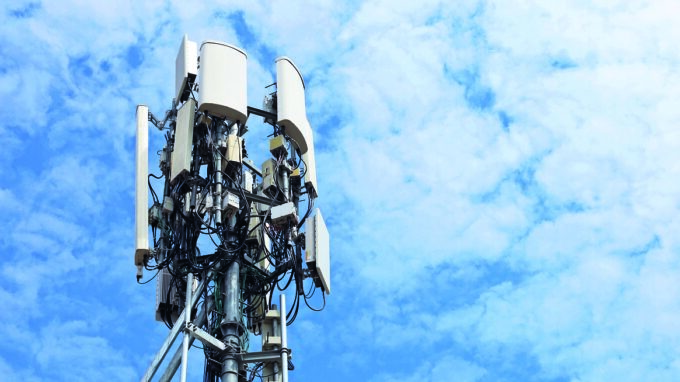
From 2023, providers of telecommunications services will have to report a disruption in their telco network as soon as it could affect at least 10,000, and not only from 30,000. The report will no longer be forwarded to the Federal Office of Communications (Bakom), as is currently the case, but to the National Alarm Center.
Internet service providers, in turn, must strengthen security measures against unauthorized manipulation of telecommunications equipment. This is the case, for example, when they detect harmful activities such as phishing operations on websites. In this case, they must be able to block or restrict a corresponding Internet connection by providing methods to filter the data originating from their network with a forged source IP address.
The security of mobile networks must also be optimized from 2023. This affects, for example, the security of the latest generation of mobile networks (5G). The providers must, for example, operate a management system for information security and take into account the requirements defined by Bakom.
The innovations are in the revised Ordinance on Telecommunications Services which the Federal Council adopted on November 16, 2022.
Source: Bakom/Editorial Office

Sexy may not be the right attribute for the luminous vest. But brilliant it certainly is and safe - safer than you might think. During the day, especially in cloudy weather and at dusk, the fluorescent color of the luminous vest brings the safety advantage. At night, the reflective elements on the vest increase visibility and thus safety. It is scientifically proven that pedestrians with reflective elements are recognized in the darkness at least from three times the distance. If the reflective elements are placed on parts of the body that move when walking - i.e. on the wrists and ankles - pedestrians can even be recognized four to five times earlier. Many people are apparently not aware of this. The effectiveness of light vests and similar visibility aids is often underestimated.
"Pedestrians probably underestimate the effectiveness of reflectors because they cannot see their effect themselves," explains Andrea Uhr, a research associate in road traffic research at BFU.
On the other hand, people overestimate their own visibility when they wear dark clothes at night. This has been demonstrated in several studies. In one of these experiments, people wearing dark clothes had to walk on the spot and indicate when they thought a motorist would notice them for the first time. They overestimated this distance by a factor of 7. "On the one hand, this is because they themselves can see the car well with the bright headlights. On the other hand, when you are on foot in a dark environment, your eyes are already used to the dark. So you can perceive a relatively large amount of the surroundings and probably assume that the car driver can see a similar amount," Uhr continues. For car drivers, however, the situation is different.
"People dressed in dark clothing are generally difficult to see in the dark. In the car, the situation is aggravated by the fact that you are often blinded by oncoming headlights. So the eye is less able to adapt to the dark."
Basically, the human eye is less able to recognize contrasts in the dark and it is more difficult to estimate distances correctly. In the peripheral field of vision, inconspicuous objects are overlooked even more frequently than in daylight. This is exactly where pedestrians move - at the sides of the field of vision of people driving cars. Bright colors, reflective elements and functioning lights on bicycles help drivers to recognize pedestrians better and earlier. Anyone traveling on foot or by bicycle can therefore do a lot for their own safety and casually set bright and colorful accents in the dreary gray of the winter months.
Tips for more safety in the dark
Source: AAIB